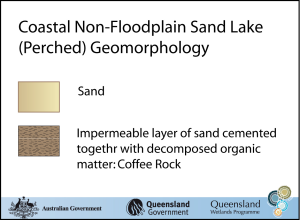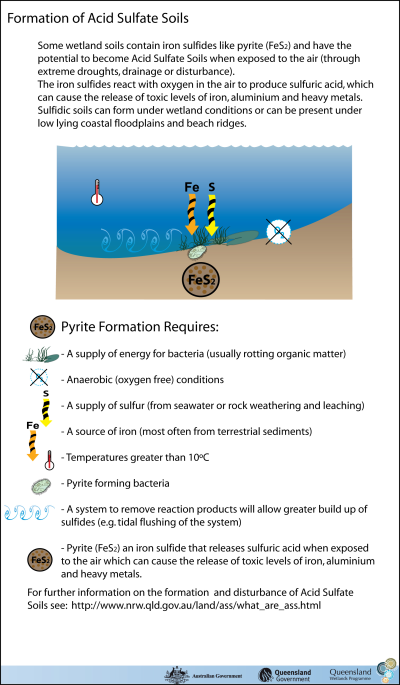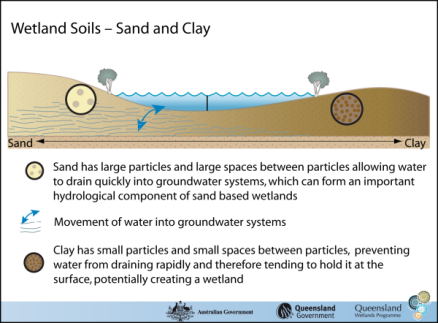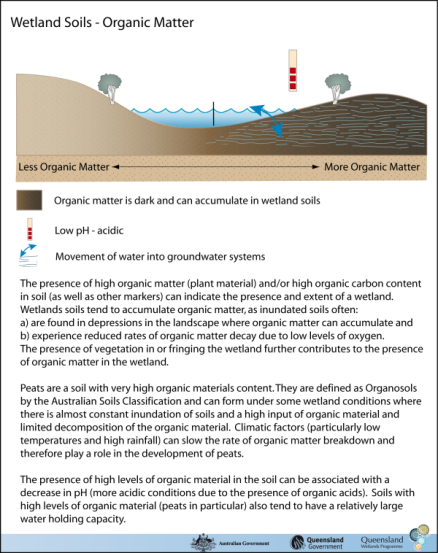|
|
Coastal and subcoastal non-floodplain sand lake—PerchedCoastal and subcoastal non-floodplain sand lake—Perched – Geomorphology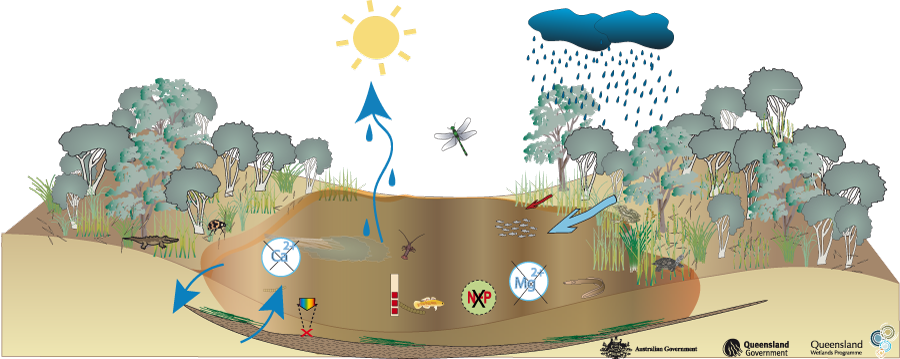
Click on elements of the model or select from the tabs below
Perched lakes are formed when sand is cemented together with decomposed organic matter (such as leaves, bark and dead plants) and aluminium and iron, creating a relatively impermeable layer well above sea level. This cemented (or indurated) layer, known as ‘coffee rock’, tends to slow water from percolating down to the regional aquifer, holding rainwater in a depression, forming a lake (and associated swamp habitat). The geomorphology of perched lakes can be quite diverse and complex. The wetland environment that develops can depend on the topography, depth of the coffee rock, degree of cementation (induration), as well as its organic matter and metal content. The perched lake’s position in the landscape (e.g. in a deflation dune or a backswamp) also plays an important role in the formation and functioning of the perched lake. Commonly they are formed in saucer-shaped depressions in the dune surface with their own local water table that sits well above the large lens-shaped aquifer that may be associated with the greater sandmass system. However, further research is required to better understand these wetlands.
Last updated: 22 March 2013 This page should be cited as: Department of Environment, Science and Innovation, Queensland (2013) Coastal and subcoastal non-floodplain sand lake—Perched – Geomorphology, WetlandInfo website, accessed 8 May 2025. Available at: https://wetlandinfo.des.qld.gov.au/wetlands/ecology/aquatic-ecosystems-natural/lacustrine/non-floodplain-perched-lake/geomorphology.html |

 — Department of the Environment, Tourism, Science and Innovation
— Department of the Environment, Tourism, Science and Innovation

